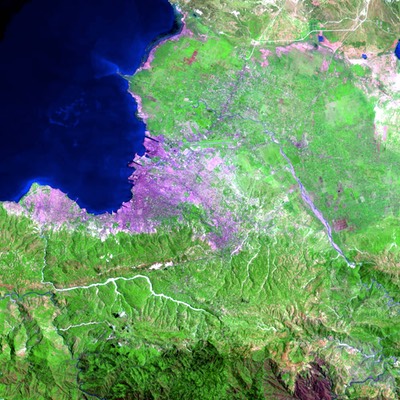On January 12, 2010, a Mw7.0 earthquake struck the Port-au-Prince region of Haiti, killing more than 200,000 people and causing an estimated $8 billion in damages, ~100% of the country’s GDP. It is the largest event to strike the southern part of Hispaniola since the September 15, 1751, November 21, 1751, and June 3, 1770 events, which also severely affected Port-au-Prince. They were followed on May 7, 1842 by a M8.0 event farther north, inferred to occur on the offshore section of the Septentrional fault along the northern coast of Haiti, then by a sequence of M7.5 to 8.1 events between 1946 and 1953 on the subduction fault to the northeast of the Dominican Republic. These large earthquakes highlight the three major fault systems that accommodate the Caribbean—North America relative plate motion in the northeastern Caribbean, at the transition between frontal subduction of the North American plate beneath the Caribbean plate in the Lesser Antilles and roughly east-west strike-slip motion along the Cayman Trough.
The 2010 Haiti earthquake was originally thought to have ruptured the Enriquillo fault of the Southern Peninsula of Haiti, one of two main strike-slip faults inferred to accommodate the 2~cm/yr relative motion between the Caribbean and North American plates. The analysis of Global Positioning System (GPS) and radar interferometry (InSAR) measurements of ground motion, together with a precise relocation of aftershocks, show that the earthquake ruptured an unmapped north-dipping fault ("Léogane fault"'), subparallel to — but different from — the Enriquillo fault. Coseismic motion involved a combination of horizontal and contractional slip (i.e., transpressional), consistent with the long-term pattern of strain accumulation in Hispaniola as derived from ~10 years of Global Positioning System (GPS) measurements across the island.

The unexpected contractional deformation found in the earthquake and in the secular strain accumulation pattern indicates current activity of faults other than the Enriquillo. The Enriquillo fault did not release any significant accumulated elastic strain and therefore remains a significant source of earthquake threat for Haiti in general and Port-au-Prince in particular.
The Haiti 2010 Earthquake (McGraw Hill 2011 Yearbook, 2011)
Science and Society in the Aftermath of the Haiti 2010 Earthquake (in French)
